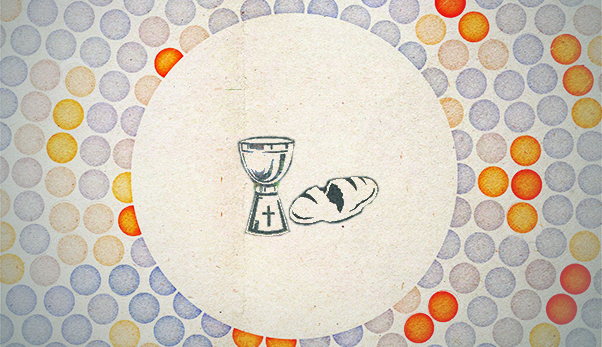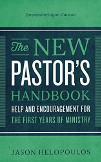
The Second Commandment, Westminster and Images of Jesus
No, the Westminster divines weren’t intentionally attacking The Jesus Storybook Bible; but they probably would have taken issue with the pictures of Jesus.
I serve on the Theological Examination Committee for the Presbytery in which I minister--which means, among other things, that I help examine candidates who sense a call to the ministry. Over the last couple of years, I’ve noticed an increasing number of candidates taking an “exception” to the Westminster Standards’ interpretation of the Second Commandment, mainly due to the interpretation of the use of “images” in worship.
A good place to start when considering this issue is to look at what the Second Commandment actually says? In Exodus 20, we read,
You shall not make for yourself a carved image, or any likeness of anything that is in heaven above, or that is in the earth beneath, or that is the water under the earth. You shall not bow down to them or serve them, for I the LORD your God am a jealous God, visiting the iniquity of the fathers on the children to the third and the fourth generation of those who hate me, but showing steadfast love to thousands of those who love me and keep my commandments (v. 3-6; cf. Deut. 5:8-10).
The Westminster Divines interpreted this by affirming, “The second commandment forbiddeth the worshiping of God by images, or any other way not appointed in his Word” (Westminster Shorter Catechism, Q. 51). The Westminster Larger Catechism similarly teaches:
"The sins forbidden in the second commandment are, all devising, counseling, commanding, using, and anywise approving, any religious worship not instated by God himself; tolerating a false religion; the making any representation of God, of all or of any of the three persons, either inwardly in our mind, or outwardly in any kind of image or likeness of any creature whatsoever; all worshipping of it, or God in it or by it; the making of any representation of feigned deities, and all worship of them, or service belonging to them, all superstitious devices, corrupting the worship of God, adding to it, or taking from it, whether invented and taken up of ourselves, or received by tradition from others, though under the title of antiquity, custom, devotion, good intent, or any other pretense whatsoever, simony, sacrilege; all neglect, contempt, hindering, and opposing the worship and ordinances which God hath appointed" (Q. 109).
I am finding that an increasing number of pastors and candidates for gospel ministry are rejecting Westminster’s interpretation. Across my denomination—the Presbyterian Church in America (which holds to the Westminster Standards as part of its Constitution)—such a rejection is generally considered a “acceptable exception” (i.e. either it is considered a "semantic difference" with the wording of the Standards or "a difference that is more than semantic but that is not out of accord with any fundamental of our system of doctrine” - RAO 16-3). In other words, most presbyteries allow a candidate for ministry to disagree with Westminster on this issue because (they believe) it does not strike at the “fundamentals” of our faith.
Westminster's Rationale
Notwithstanding, I want to give you a brief rationale in favor of the Second Commandment as interpreted by the Westminster Divines—why they argued the way they did.1
By creating an image of Jesus (e.g., in a painting or a stained-glass window), a person is inserting his or her own ideas of what Jesus looked like. Because we do not know what he looked like, this image would not be a true image or representation of Christ. Rather, it would simply be an image of a man from the imagination of the artist that he or she has called “Jesus.”
If these images, then, do not truly represent Christ, then they are put in the place of the true Christ. Evoking any sense of worship of that which is not Christ, but rather inserted in the place of Christ, is--by definition--idolatry. If an observer were to gaze upon that image with the intent to worship, by thoughts or emotions, then that observer would be worshipping a man-made image and not the true God-man, Jesus Christ. The same principle would also apply for images of God the Father and God the Holy Spirit.
The Westminster Standards not only identify the physical creation of an image of God (or one of the persons of the Trinity), they also target the thought behind it as a violation of the Second Commandment. Whether the thought is expressed on paper or stays in the mind, the same principle applies: inserting an “invented” Christ in the place of the true revealed Christ in Scripture is idolatry.
In opposition to this, Westminster puts the emphasis on Scripture, God’s self-revelation, and not man-made images of God. Why? Because the Bible is sufficient for directing us on how and by what means we are to worship God. They would argue that we do not need to add to or help the Scriptures along by fashioning an idea of Christ and then calling it “Christ.”
Moreover, God has already given us one visual means by which we both remember and participate in the body and blood of our Lord Jesus. Scripture calls this the “Lord’s Supper” (1 Cor. 11:20). We are left to ask ourselves the question, "Do I believe that God’s Word and sacraments are sufficient means of salvation and sanctification for His elect?" The answer we give to this question will reveal how we approach the issue of images of Jesus.
If you haven’t thought through this issue before, I want to encourage you to consider studying it. It shouldn’t scare us to think through the wisdom of our Confessional heritage. Rather, it should--at the very least--cause us to ponder the rationale and explanation for Westminster's interpretation of the second commandment. Wherever you land on this issue, this much we can agree upon: We should all strive to understand the Second Commandment more faithfully, to reaffirm the sufficiency of Scripture in all of life, to avail ourselves to the ordinary means of grace and to strive for undivided worship.
1. If you would like an in-depth defense of Westminster’s position, see Daniel R. Hyde, In Living Color: Images of Christ and the Means of Grace (Grandville, MI: Reformed Fellowship Inc., 2009).
Christward Collective is a conversation of the Alliance of Confessing Evangelicals. It is supported only by its readers and gracious Christians like you. Please prayerfully consider supporting Christward Collective and the mission of the Alliance.



















 © Alliance of Confessing Evangelicals
© Alliance of Confessing Evangelicals


